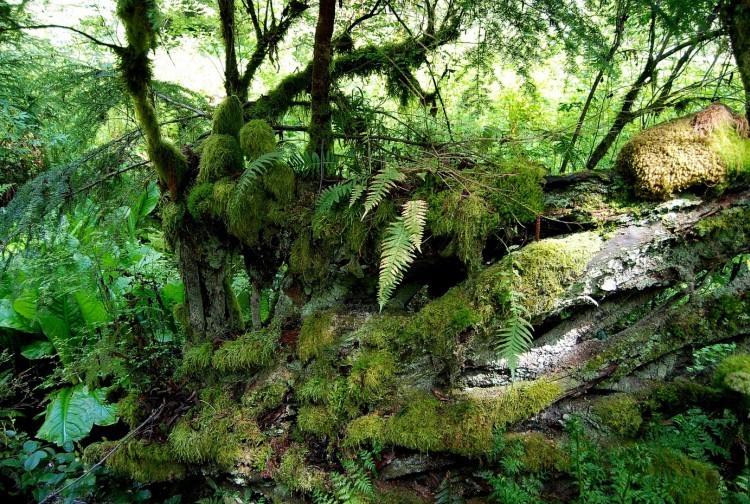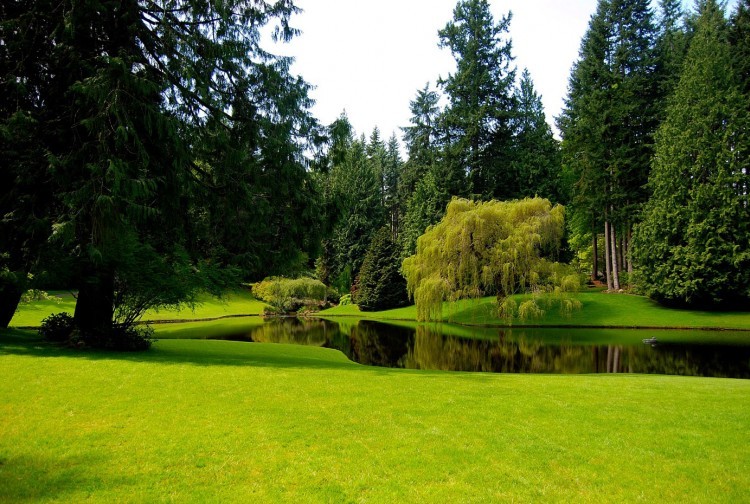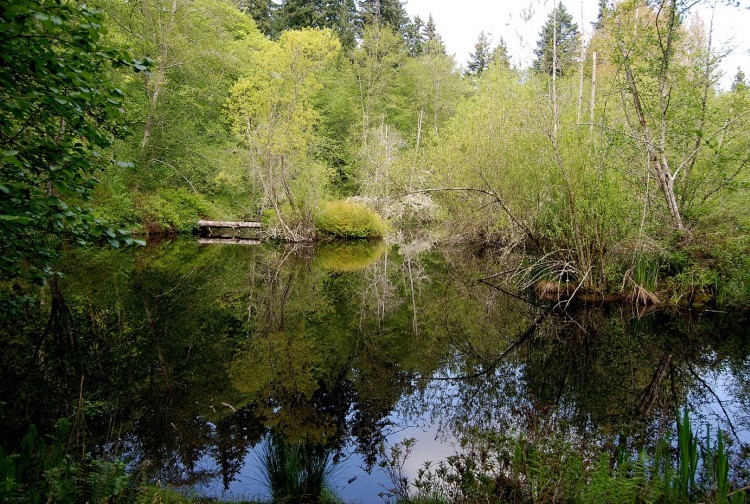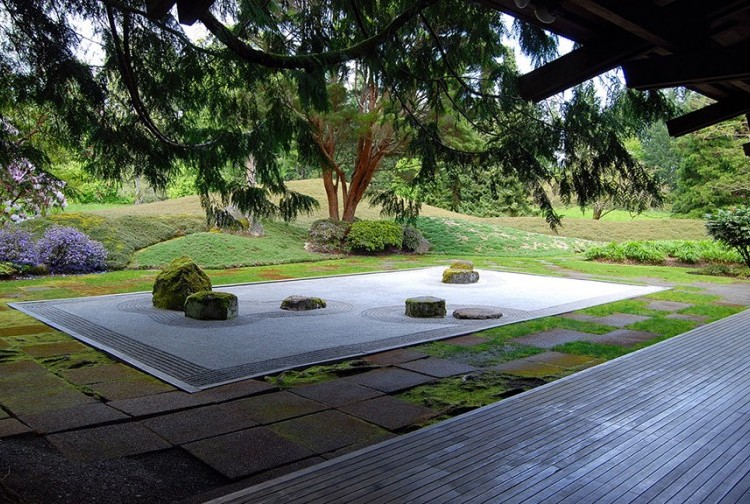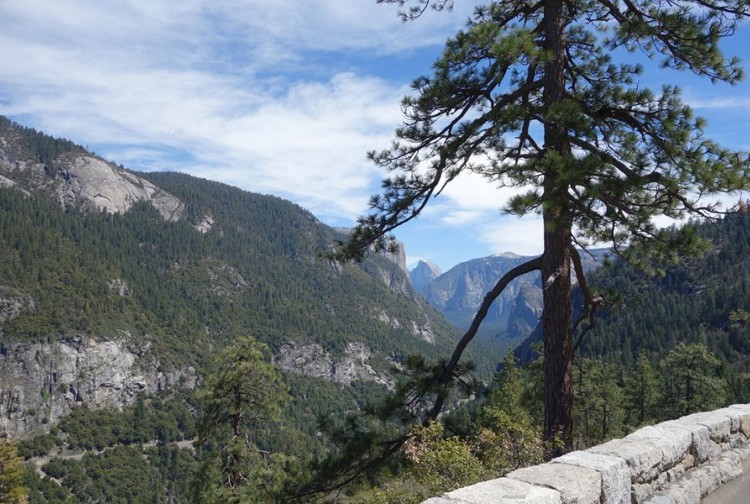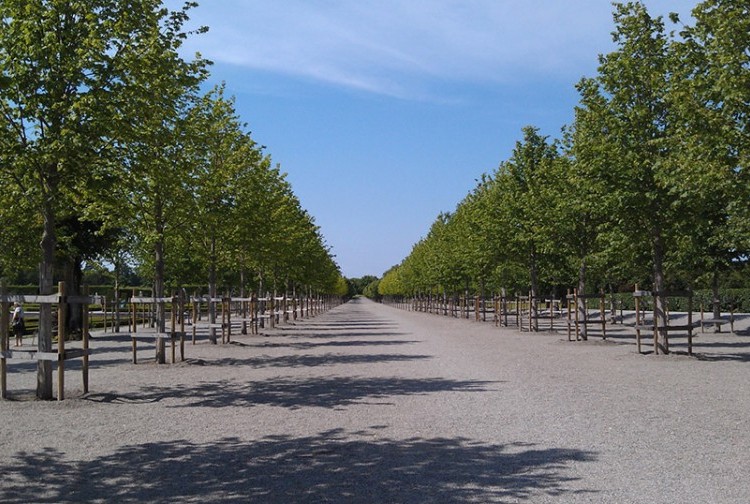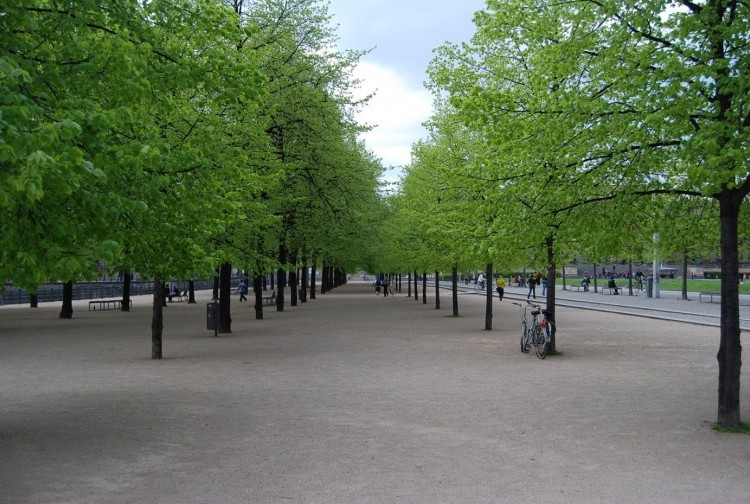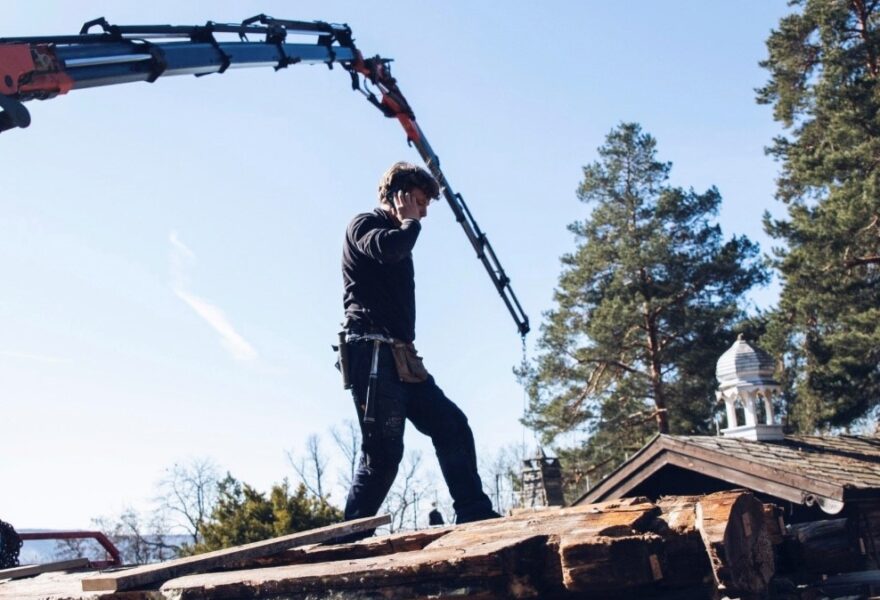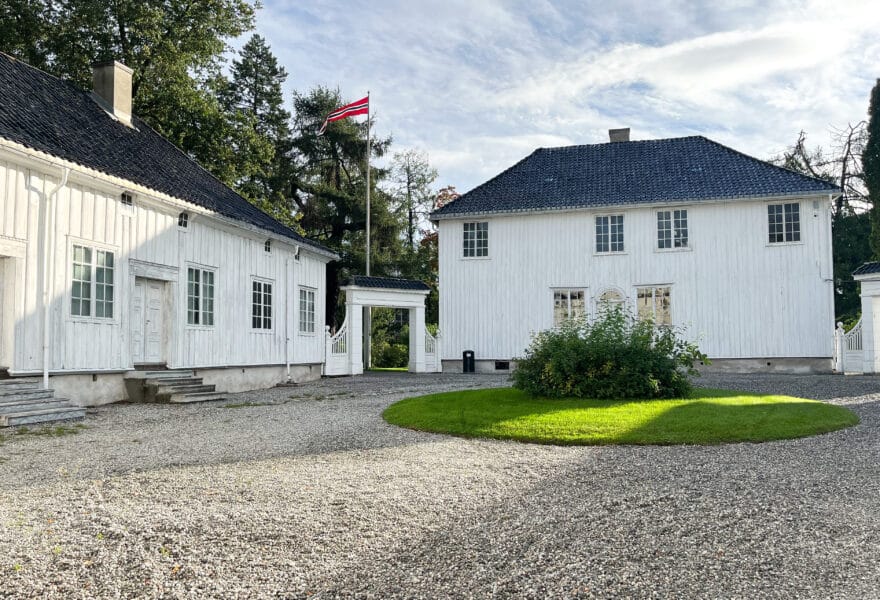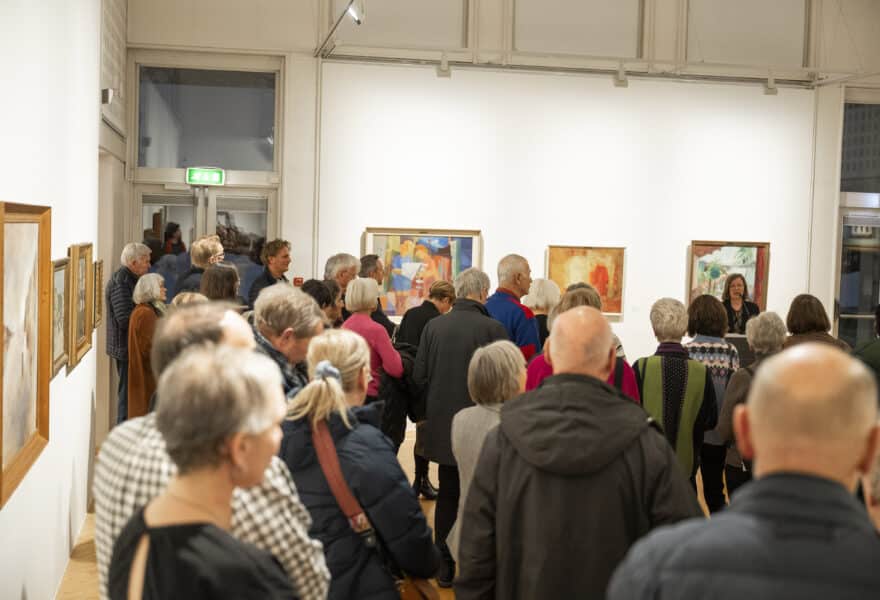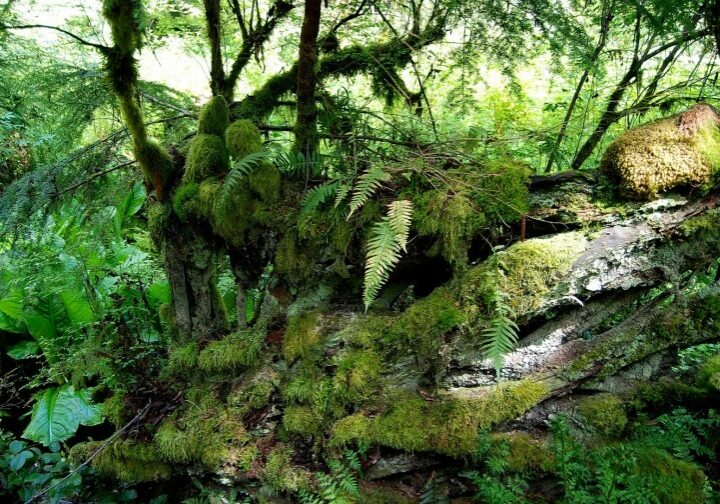
The park as an idea
There is very little that we humans can say that is immediately given and independent of how we have developed models and thought structures to be able to understand and relate to the environment. Both art and cultural history (with the styles) and nature appear in our culture as ideas. Even nature appears to us as something conveyed, interpreted, already shaped.
Pristine nature therefore does not exist strictly for us. And the "innocent eye", which sees things as an objective, impartial and "natural" and indisputable truth, does not exist. We can not see anything if we do not see it as something. Where the style idea meets the nature idea, the park idea arises. When this idea leads to action, the immutable (the mental form) and the changeable (physical, organic growth) meet. Landscaped parks are therefore a phenomenon that has built in an inner contradiction and carries on its own doom. Most large European parks contain several formidable and historical forms within the framework of one and the same park. The park of the Charlottenburg Palace in Berlin is thus exemplary as a model book, with its long period of creation in the 18th and 19th centuries and rehabilitation in the post-war period.
In order for us to be able to discuss trees and parks in a factual way, we need some distinctions. I confine myself to three categories, all of which refer to formulated ideas: parks and gardens (in all styles, including Chinese, Japanese and the estates of England and the continent), cultivated cultural landscapes with agriculture and forestry, and free-growing forests and wilderness, which no direct human intervention has been made through burning and felling. But man-made climate change is of course helping to change the wilderness just as prehistoric storms, lightning strikes and forest fires did before the encounter of trees and forests with culture. The relationship to old trees will be different depending on the category we are talking about. In the wilderness and protected forests, areas can arise where for up to 1000 years gigantic forests have emerged that are sustainable and healthy and where decay and growth go by themselves. We see this i.a. in the large coniferous forests of the west coast of the United States and Canada. But even in these, which today can be experienced from cars (Yosemite and the forests of Oregon, Washington State and British Columbia) and are formatted for nature tourism (Muir Woods outside San Francisco), large fields regularly burn down.
In these national nature parks we can experience, fantastic, huge, ancient trees! Or in our immediate area we can encounter magical, partly dilapidated primeval forest as in parts of Trillemarka or unique micro-areas such as the pine and lowland forest in the eastern slopes at Tunhovd. Most people are probably familiar with such areas both in the immediate area or from travel. In such cases, old trees carry a symbolic natural value.
The cultivated cultural landscape, on the other hand, is based on tree felling and quarrying to clear open space for agriculture. Where is the criticism of cutting down old trees to open up for agriculture? I do not remember seeing any massive criticism of it. Bushing and overgrowth are rather the problem that is addressed. On the other hand, we have seen criticism of conducting accountable forestry. [1] In agriculture, the planted tuna tree is allowed to stand as a symbol of the family and the farm as a center for generations of work with the soil. - But what about the city parks?
[1] Criticism of forestry on the American west coast is i.a. penned by lyricist and conservationist Gary Snyder. See, for example, his The Practice of the Wild from 1990. The city and castle parks as we find them in and around European cultural cities such as Paris, Berlin and Stockholm, have the models for their current form in the years between the 17th century and the early 19th century. The city parks are married children of the older castle parks. I would like to refer to four parks: the Tuileries and the Luxembourg Gardens in Paris, the park at Drottningholm Castle outside Stockholm and the Lustgarten in Berlin. All four have a long history. The first three took their guiding form in the 17th century, while Lustgarten was designed and laid out in the early 19th century. All of these parks - and many more - have, as all park enthusiasts know, lived through a time when the original trees had become so overgrown that in the most formal part of the park, typically in avenues, they have been cut down and replaced with new trees. Park managers like to think for periods of at least 25-30 years before a previous ideal situation is re-established. [1]
[1] It can be discussed exactly what the trees should look like and what relative height they should have in relation to the park structure, when they are ideal. We can get an idea of this by studying the 17th and 18th century drawings and sections. As a general rule, romantic parks can withstand far taller, wider and free-growing trees than classic plants. Parts of the Tuileries were newly planted since the 1990s. The Luxembourg Garden was rebuilt and replanted during Haussmann's major urban renewal in the second half of the 19th century. This renewal work is still ongoing and some of the avenues and the most formal parts have been newly planted in recent decades. The main part of the long, four-row 17th century alleys in Drottningholms Slottspark was newly planted a few years ago. The Lustgarten in Berlin, which was laid out during the heyday of the neoclassicism in the 1820s, was completely destroyed in 1945. It was not until 1998 that it was replanted as an important symbol of the classic and high-cultural Berlin it once was.
What amazes us who visit these parks today is how neat, well-shaped and elegantly slender the trunk trees are, and how precise the park shape they show. Sometime in the future, these trees will also have to be replaced by new ones if the park idea is to be preserved. This is the company Drammens Museum wants to be in. Drammens Museum's parks must have a historically readable form, which provides a reflected experience of and knowledge of garden historical ideals as they have been designed in Drammen. The museum's parks and gardens are cultural-historical objects and they must be maintained. In other words, slightly different considerations must be taken into account than in today's outdoor areas.
Because what happens when you do not preserve park ideas? The ideas weaken and become unclear. For example, you can get a simplified activity, review and utility park where spreading sites, restaurants, concert pavilions, riding stables, tennis courts, "biergarten" ("Friluften"), park scenes and curbs are removed in favor of a more sober, "modernized" and easily run park. Some of this happened with Drammen City Park in the 1970s when it went from being a "bourgeois" 19th century cultural park to a more "social democratic", child-friendly landscape park. The trees are still old and give a nice atmosphere and function as a "big city lunge", but today's park is not quite similar to the park we had until the 1960s. Drammen city park as a cultural monument has been weakened, even though the trees are old and the new social and practical functions are the result of a desired policy and which many enjoy.
And what about the paths and viewpoints in Bragernesåsen, an international-class forest park close to the city? The history of the hill is described by Per Otto Borgen in the book The Fairy Tale about Bragernesåsen from 1996. How is this fairy tale experienced today? Due to the fact that little or nothing has been done in many years, the clock is growing and some of the fabulous views up to the oak villages are today covered by huge spruce trees and lush shrubs. The location of the stone benches shows exactly where those who created the idea and shape of a walking park in Åsen thought there should be a clear view. The historically precise idea and its German-romantic form are therefore not preserved, even though it is highly worthy of preservation. Fortunately, something is being done, from the intake pond by the allotment oceans and up towards and around the Åspaviljongen, but also when this work started a few years ago there were - as one might expect - some expressions of displeasure. But thanks to the felling, there are now finally good viewpoints over the fjord, Nordbykollen, Fjell and the city center. But Otto Lund's path, which in some places opens in the best romantic style as if IC Dahl had chosen it as his motif in his dress days, is in some places completely overgrown and the unique microclimate and view along Thurmannsvei in ura is about to change. Preserving the footpaths and their surroundings in Åsen, as one of the city's most unique cultural monuments, means that it must be cut down and cleared. We can only hope that it can happen.
*
The town planning office in Drammen has proposed a re-establishment of some of our most beautiful parks, including Bacheparken, or Fløia, on Landfalløya. This park was unfortunately cut by the modern Rosenkrantzgaten just over 50 years ago and was still in the 1950s and 60s a park that in the middle had retained its romantic character of English landscape park with grassy plains and clusters of trees and groves along the narrow, winding the canal, but which in the outer edges had dense bushes that made it possible to build a shed and a cross-country bike trail for the benefit of the district's boys. That magic is gone since some of the original plan from the middle of the 19th century has now been re-established in recent times, especially up towards Trikkesvingen and the chapel. But the park needs a more thorough cultivation in order to appear as a good cultural monument. Landscape parks and more formal facilities change character as the sensitivity and ideals of the times change, between having narrow-cut lawns and soft meadows.
Gulskogenparken - or Arbohaven as it is called in the neighborhood - is a more complex facility than Bacheparken, and it is as it appears today not completely "finished" or clarified. From being shaped like a "pleasure forest", it bears the mark of having been converted to different purposes, a time as a fruit and vegetable garden. From the 1970s, attempts have been made to return it to a more original shape, but the trees that still stand have aged and acquired a different shape than they had originally. In a decade, the avenue will collapse, and must then be replanted. It can be said that the day Gulskogenpark is characterized by being an allegory of various garden ideas. On good days it is very beautiful and atmospheric, but it is a park composed of pieces with different expressions. There are precisely shaped terraces and partitions with beds, there is a labyrinth - a so-called "bouquet" - there is a nut grove and a field with uncut grass and wildflowers. Gulskogensparken's shape shows a good utilization of a difficult plot. At Gulskogen today is also a newly laid out rhododendron field and a romantic ending all the way up to Landfalløybrua. There are clusters of trees, a white-painted bridge and "naturally" shaped ponds with mini-islands at the ends. And of course there is the elongated and high linden alley. Two of the areas today are wide, short-cut grasslands, a newer and more modern element than other parts of the park and of the type that allows for picnics and ball games.
In the 1960s, when people still lived there and Gulskogenparken was closed (for other than boys who found the holes in the fence), there was a romantic tinge of wilderness and overgrown orchard in the parts that are today short-cut lawns. Throughout the park's 200-year life, it has experienced times of great intimacy and with a touch of a romantic and arts & crafts movement sensitivity with its sense of the Asian, perennial beds and peacocks. In the 1890s, the romantic part of the park was more rustic, overgrown and "natural" than it appears today. Here remains a research work and a job to try to reconstruct the whole in all its interesting complexity. [1] But even though we know a lot, there are still questions related to exactly what it looked like when it was brand new in the early 1800s.
When the neoclassical park at Marienlyst is now under full rehabilitation, it will be seen during the construction period that old, tall trees are felled and grass fields and footpaths are opened, excavated, drained and re-established. It seems quite radical, but the goal is not to destroy, but to plant new trees and build a park that will provide good, cultural-historical experiences and knowledge of another time's way of thinking, movement ideals and ideas about what a classically inspired park should look like. This requires clear choice and patience, a 25-30 year patience.
The work in the neoclassical park at Marienlyst is part of a long-term plan for the entire museum facility. It started with the courtyard in Gamle Marienlyst being simplified and original stone-paved walkways being uncovered. Then came a garden archaeological survey of the oldest part of the garden, between the east wing in Gamle Marienlyst and the gazebo. On the basis of the investigations, the original structure was re-established and perennials, berry bushes and fruit trees were planted and the paths were laid out with river gravel.
Now the time has come for Arbo's neoclassical park. The reason why the trees are cut down is the following: The structure that eventually emerged was unclear as a form, since one got the impression that there was an avenue all the way from Danvikgata and almost towards Hallingtunet. The very recently laid out avenue from Danvikgata is not part of the original park plans and it created a direction that takes focus away from the park space that lies between the brick building from 1930 and Gamle Marienlyst's west wing. By re-establishing Arbo's plans, there will now be a clearer focus on this park space. There is talk of a change of direction in how the park is experienced. For example, the central axis from the main door in the brick building, over the rectangular pond ("The reflecting pool") and the passage in the west wing of Gamle Marienlyst, will be clearer. This is the central axis that was created in the extension of the early 19th century garden east of Gamle Marienlyst. "Lindealléen", which some are so afraid of being cut down, thus became a source of error in the form and structure of this facility.
In addition, some of the trees in the row of trees along the Lyche pavilion had already been removed, so there was a stay in the "row of teeth". In addition, there is an element that is very important - perhaps the most important. The growth and size of the trees blew up the frame - ie the dimensions - in this part of the park. The area was simply too small for such large trees. And the buildings were too close to the rows of trees. This is a typical example of how important it is to dimension trees in relation to context. The role models for Norwegian parks and gardens are often located in European facilities that spread over much larger areas. Trees do not grow on drawings, so this with scale is a problem that occurs many decades after planting. Imagine what the living room would look like if the furniture you bought started to grow. - A small question we must allow ourselves to ask ourselves is: How tall do we think the linden trees on Gulskogen were when the avenue was first planted for - probably - over 200 years ago?
*
To you who are reading this: Remember some of this the next time you visit a park or a garden: what do the plants and their location tell you right here and what makes this a cultural monument? Such questions are something most people take for granted when studying a landscape painting, because what is a landscape painting other than the interpretation of an idea about nature? The shape of the image is a model that the artist's conscious visual action has created in the brain and mind and transferred via hand to the canvas. The same approach applies to historical parks and oriental gardens, they are created to be understood. The cultural experience must make sense. Try this approach - it's worth the effort.
[1] A good deal of research has been done at Gulskogenparken. The museum's chief conservator and leading garden theorist, Einar Sørensen, has written about this in the book Gulskogen og landlivets gullalder, Drammen 2004. Sørensen has also written about both Gulskogenparken and Bacheparken (Fløiaparken) in the book, Einar Sørensen, Norwegian garden art under European skies, Oslo, 2013 This book also contains a thorough review of the most important European garden theories. The book is a must for all garden enthusiasts.
Åsmund Thorkildse
Museum director
See also...
The pleasure garden at Marienlyst
The Marienlyst project – revitalization, anchoring and inclusion
Opening of Perspektiv Drammen - Artwork from the museum's collections
Perspective Drammen
Artwork from the museum's collections
22.02.24-04.08.24
Opening of the November exhibition 2023
22.11. opened Buskerud Visual artists and Drammens Museum November exhibition 2023. We welcome you to a great exhibition in the Lychepaviljon from 23.11.23 to 07.01.24
The November exhibition 2023
The November exhibition 2023 opens on Wednesday 22 November at 18:00

